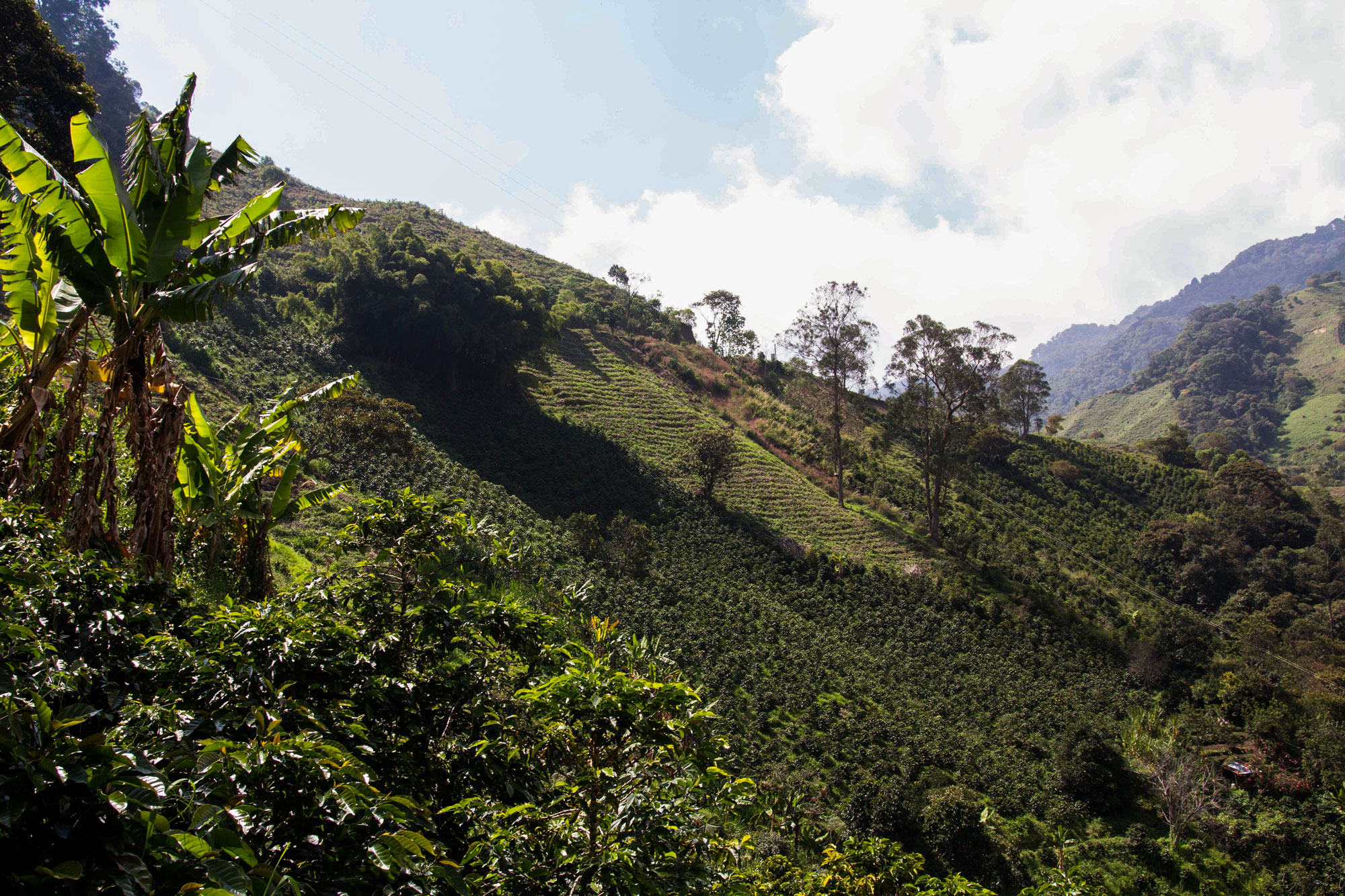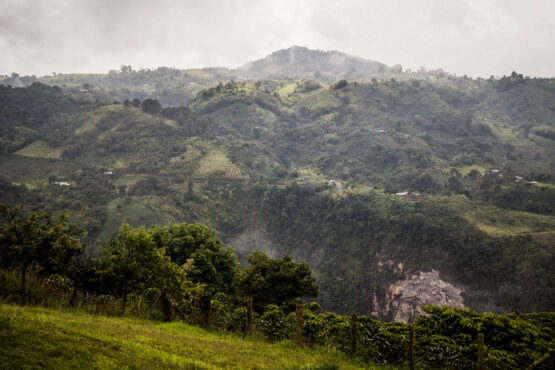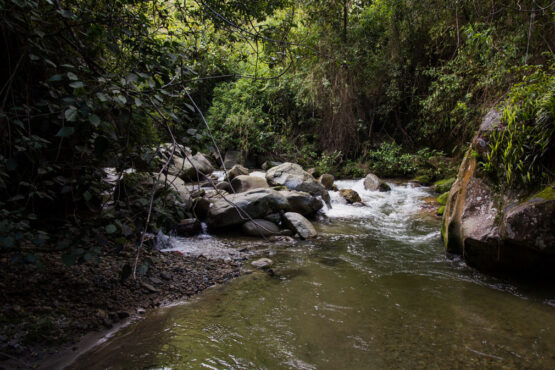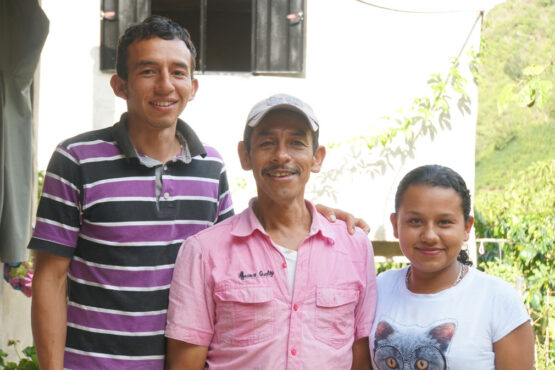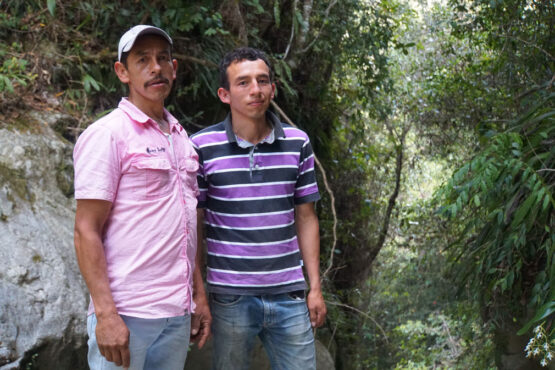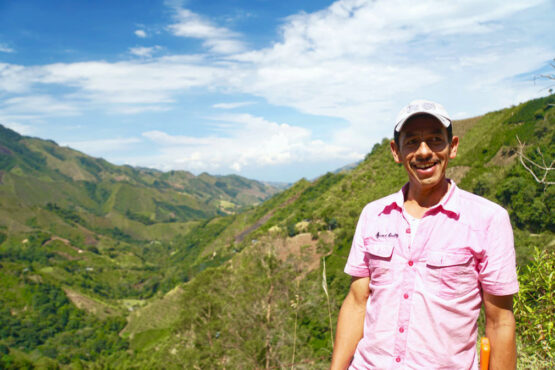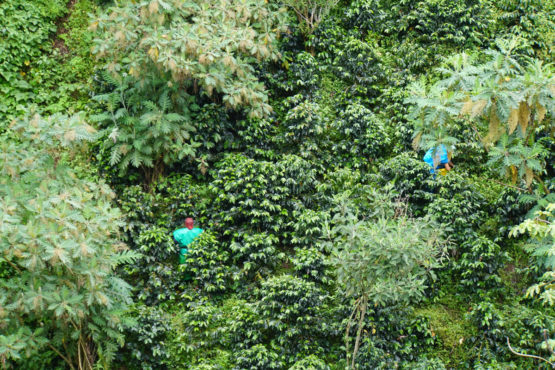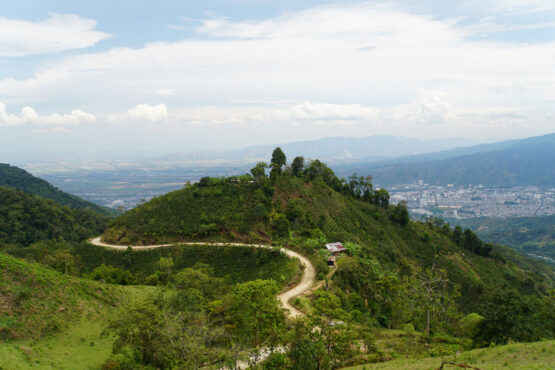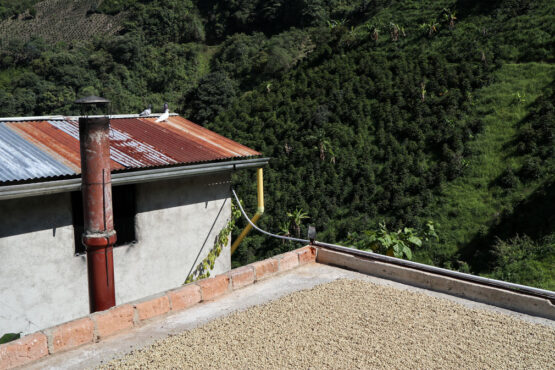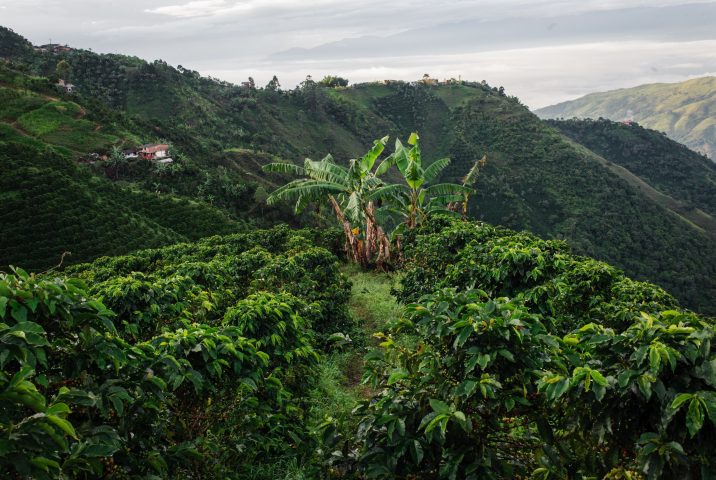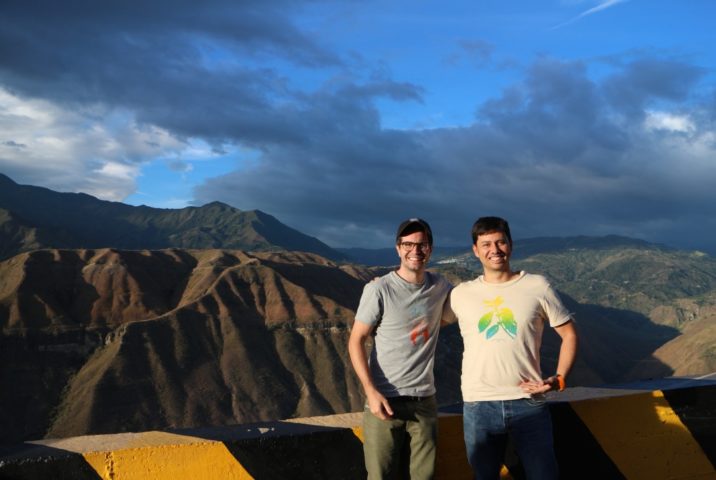La Esperanza
Sweet and vibrant. Grilled pineapple, concord grape and peach, with lingering panela sweetness.
This micro-lot was produced by William Buitrago and Aminta Mahocha Franco on their 11-hectare farm, La Esperanza (meaning “the hope” in Spanish), located near the small community of China Alta, in the municipality of Ibagué, in Colombia’s Tolima state.
Finca La Esperanza sits at a staggering height of 1,960 meters above sea level, in the steep, rugged hills that surround Tolima’s capital city, Ibagué. The region of China Alta is named for the Rio La China, a small and beautiful river that swerves through the mountains and eventually feeds into Rio Magdelena, Colombia’s principal river. Alta refers to the higher elevations of the area, where the sweetest and most refined coffees are grown and harvested. The farm sits on the steep valley walls of Rio La China, which is used as a water source to irrigate and process the coffee.
William’s family moved to China Alta in the 1970s to farm cattle and William was born and raised nearby. He and Aminta established La Esperanza in 1994, across the valley from his parent’s home. Initially, the couple farmed cattle but in recent years have shifted to focusing on specialty coffee production, which is a more viable and profitable option. The farm is eleven hectares large, with five hectares planted with Caturra and Colombia trees. The trees are planted further apart than usual (just 4000-5000 per hectare, instead of the usual 6000), which allows adequate sunshine to reach them despite the cooler temperatures of China Alta. Although this affects his overall yield, William’s commitment to high-quality production has driven this decision. When praised on his coffee’s excellent cup quality, William shares; “This is a great motivation. It’s one thing to get premiums, but another to get recognition from a part of the world so far away”.
William and Aminta have gifted each of their children, Mauricio and Geraldina, a plot of land on the family farm to manage and profit from, to encourage them to understand the economics of farming coffee and potentially see a future in it. William identifies labour as a challenge in this region, as many of the younger generations are moving to the city and abandoning coffee production. He hopes that specialty programs will develop and grow, as higher premiums are a more attractive incentive for young people to stay in China Alta and continue producing coffee.
Outside of coffee, William is an avid apiarist and keeps over 30 beehives on the farm, producing around a tonne of honey annually, which he sells into the local market. During a farm visit, we were proudly shown a small colony of tiny, native Melipona bees that he has harvested from the coffee plants and relocated to the outer wall of the farmhouse. These tiny bees produce very little honey but are kept by the family as pets. According to William, the success of the bees and coffee are closely connected, with the bees pollinating the coffee trees and the coffee blossoms contributing to the clear and sweet quality of the honey.
ABOUT CHINA ALTA
Historically the area of China Alta has been known for cattle, sugarcane and trout, which are farmed in pools along the river. Coffee is a relatively new crop for the region, having only been planted in the last 30-40 years. Most coffee farmers purchased land in the area because it was more affordable than traditional coffee farming areas like Planadas and Chaparral, in Tolima’s south. Higher elevation areas were considered less prosperous than lower areas because they typically achieve lower yields. However, this region has since gained acclaim for the high cup quality, sweetness and complexity of the coffees produced here.
Most farms in the region are planted with the Caturra variety, which was the most popular variety during the 1970s and 1980s when the farms were established. Coffee in China Alta is farmed with traditional techniques. Fertilisation occurs around three times a year, usually after manual weeding, and pesticides are rarely used. The coffee is selectively hand-harvested, with most labour being provided by the farmers and their families.
The region surrounding China Alta is the traditional home of the Pijao people, a loose federation of indigenous communities who shared a similar language and culture. Beyond Tolima, the Pijao territory once spread all the way to the departments of Huila in the south and Quindio in the west. Because the Pijao had such an extensive realm of influence, their cultural heritage is still visible throughout various small towns across Colombia every June 21st, when many gather on the streets to celebrate the ‘Pijao New Year.’
ABOUT TOLIMA
Coffee from Tolima has historically been very difficult to access due to the region’s isolation and instability. For many years this part of Colombia was under the control of Colombia’s notorious rebel group, the FARC, and as a result, it was unsafe and violent. Since 2012, safe access to this region has been possible as a result of peace talks between the Colombian government and the rebels. Since this time some stunning coffees from small producers have become accessible to the international market.
The word ‘Tolima’ comes from the local indigenous language and means a “river of snow or cloud”. The region sits on the Cordillera Central, in the middle of the three mountain ranges that provide a range of microclimates well-suited to high-quality coffee production. Coffee is the leading agricultural activity in the region, followed by beans and cattle.
The most well-known regions in Tolima for specialty coffee are Planadas and Chaparral in the south. This coffee comes from the areas surrounding Ibagué, which is further north in the state. The city is also known as the “Ciudad del Abanico” or the “city of the folding fan” because when you look at it from the sky the rivers running from the mountains split up the crops of rice and cotton, and it looks like a beautiful handmade folding fan.
Our export partners for this coffee, Pergamino, have worked hard commercialise specialty-grade coffee throughout Cauca, and have uncovered some stunning coffees and very dedicated producers in the process. They work closely with the producers to give them feedback on their coffees (provided by Pergamino’s expert team of cuppers) and provide top up payments when the coffee is sold at a higher premium.
Head here to learn more about the work of Pergamino across Colombia’s coffee regions.
HOW THIS COFFEE WAS PROCESSED
This lot was selectively hand-harvested, with most labour being provided by William and his family. During peak harvest, the family hires local labourers to help harvest the coffee cherry, who are paid per kilogram or on a daily rate when there isn’t much coffee to harvest. William prefers to work with the same pickers every year as he has taught them how to select only the ripest cherry for processing. To ensure pickers come and work for him he pays a 10%-15% premium on the local daily rate and provides workers with three meals a day.
The cherry was then processed using the washed method at La Esperanza’s ‘micro-benficio’ (wet mill). The coffee was pulped using a small electric pulper and then placed into a fermentation tank. Because of the cooler climate in China Alta, producers like William tend to ferment the coffees for longer than usual and will often blend several days’ worth of pickings over a 2-3 day period. Everyday freshly picked cherry is pulped and added to the mix, which lowers the pH level and – along with the cooler temperatures – allows for an extended fermentation process. This fermentation process contributes to a vibrant, winey acidity in the coffee’s cup profile.
Following fermentation, the coffee was washed using clean water from the Rio La China and then carefully sun-dried over 10–18 days. William uses the “Casa Elba” system for drying, where parchment is laid out to dry on rooftop patios (usually on top of the farmhouse). A retractable roof on a pulley system can be pulled over the coffee to protect it during rainy weather or to slow down the drying process when it is very hot and sunny. Rakes are used to turn the coffee regularly during the drying stage, to ensure even drying.
Once dry, the coffee was delivered to Pergamino’s warehouse, where it was cupped and graded, and then rested in parchment until it was ready for export.
